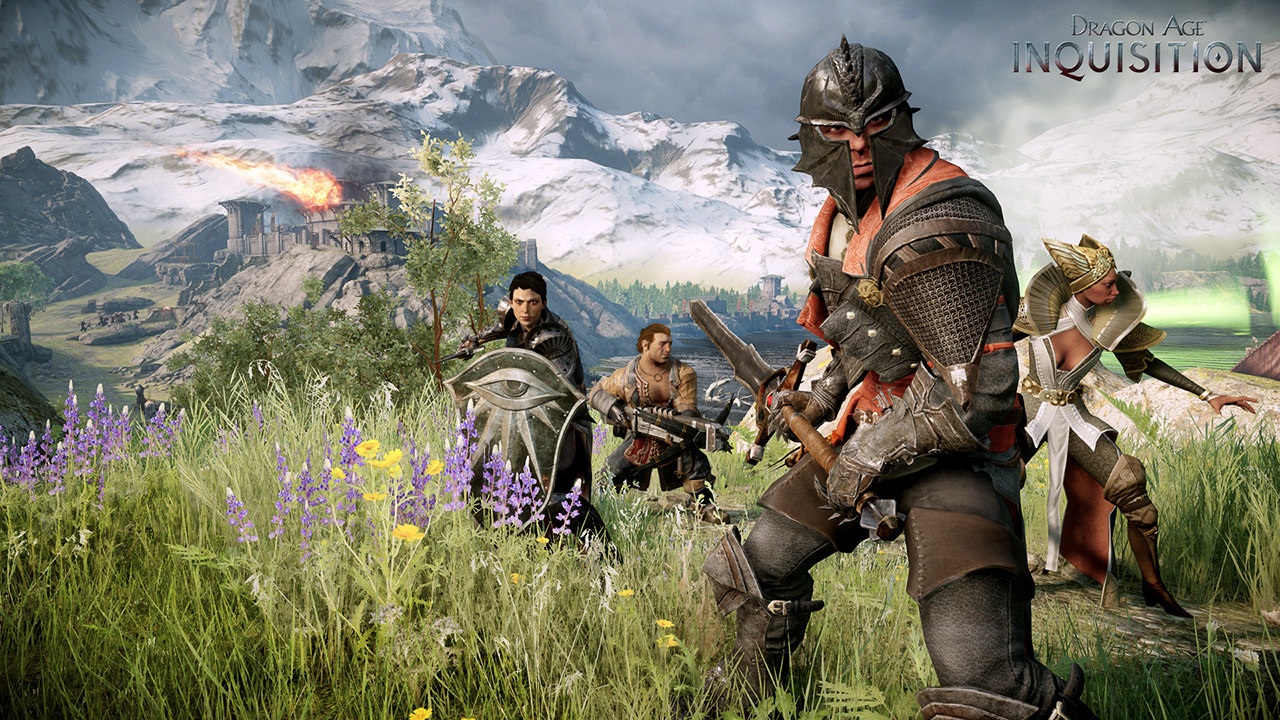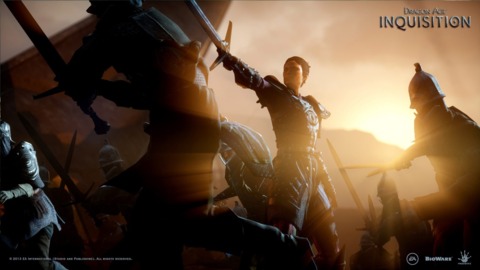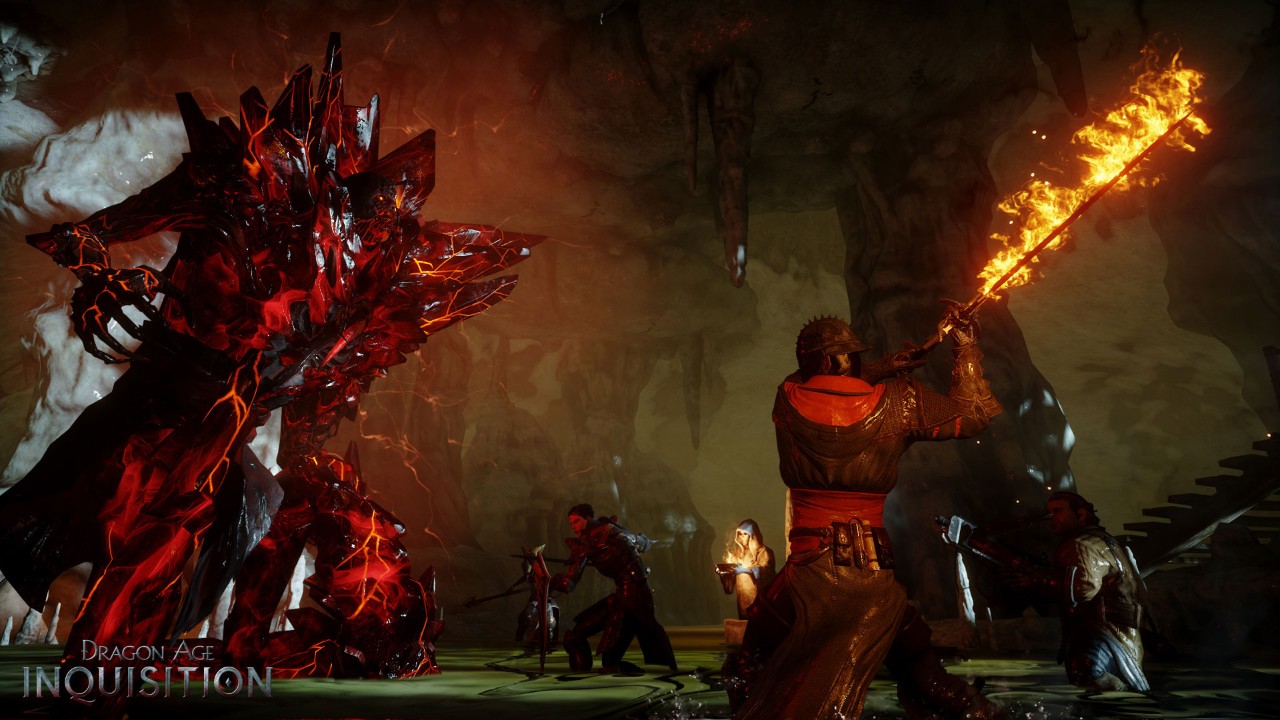Dragon Age: Inquisition is big. It’s a fantasy role-playing world full of sweeping vistas and vast stretches of terrain just waiting to be explored. But to hear BioWare describe it, it's not size for the sake of size. It's a means to a different end.
"At the heart of all this is the idea of making sure you're in control of everything that's happening," says Mark Darrah, executive producer on Dragon Age: Inquisition. "In Dragon Age II, the story and combat happened at you. Here, you're making things happen. Everything we've done with this game-- exploration, combat design, deeper crafting--it's about giving you the ability to act."
Put a different way, BioWare wants to replace the claustrophobic basements and tunnels of Dragon Age II with a sprawling sandbox designed to let players create their own stories. The demo BioWare brought to Seattle for PAX showcased a couple different environments: the lush hills of Crestwood and the arid badlands of the Deep Desert. Crestwood alone, according to BioWare, is bigger than all of Dragon Age II while still "not even close" to being the biggest environment in Inquisition.

But don't go mistaking this for an Elder Scrolls game. Rather than offer a single, all-encompassing world map, BioWare wants to transport players between starkly different landscapes, each location offering a visually distinct look at the troubled nations and territories of the Dragon Age world. Your role as the leader of the Inquisition is to crack the proverbial whip on the warring factions of the world in order to unite against a common enemy, and to do that, you need to do your inquiring across a great many parts of the world.
"Inquisition keeps sending you to new places," says creative director Mike Laidlaw. "There are new spots that open up as the story progresses, as you explore more. You start to get more leads, more information, and that draws you to new and tougher locations."
But don't go mistaking this for an Elder Scrolls game. Rather than offer a single, all-encompassing world map, BioWare wants to transport players between starkly different landscapes, each location offering a visually distinct look at the troubled nations and territories of the Dragon Age world.
What makes these new regions tougher is the fact that enemies don't auto-scale to the player's level in Inquisition, meaning you might wander into a landscape full of high-powered enemies capable of wiping you out in mere seconds if you haven't put in the proper amount of leveling. But come back to that area after you've spent some time exploring other parts of the world and it might be a different story.
"I want players to say, wow, that's an enormous dragon and I can't kill him right now," says Laidlaw. "But I'm gonna gear up and bring the right party, learn the right abilities, and we're going to go dragon slaying later. Other times, you'll come across a few low-level bandits and you'll get the satisfaction of just taking them out."
Part of the move toward bigger spaces is the desire to give players more control over combat situations. Instead of funneling you through one enemy-infested hallway to the next, BioWare wants players to be able to be able to approach a group of enemies from whichever angle they want, plan their approach, and execute that strategy on their own schedule.
One tool you can use to plan those approaches is the overhead tactical camera, a feature found in the PC version of Dragon Age: Origins that was then eschewed from its sequel in favor of faster, more frenetic combat. In Inquisition, the tactical camera is available on all platforms--consoles and PC. It essentially allows you to pause time, pull back to an isometric view high above the ground, and issue attack and movement orders like a general on the battlefield. And once those orders are issued, you can either jump back into the standard third-person camera or remain in the overhead view for the entire fight, watching your orders play out in real-time and micromanaging your party until every enemy is dead.

Of course, you can simply remain in the standard third-person action camera the entire time if that's more up your alley. "Really what we're doing is giving you different ways to control the intensity of combat," says Darrah. "It's not that you need to play the game this way. It's just another tool in your toolbox to manage more intense fights."
Continuing that idea of letting players take more control over a fight, BioWare has reduced the general speed of combat relative to Dragon Age II. According to Laidlaw, the combat pacing of Inquisition sits "dead in the middle" of the first two Dragon Age titles. Just like the inclusion of an overhead camera, it's part of an effort to let players take better stock of the situation and not feel so rushed and frazzled during fights.
"Our goal is to ensure that combat feels tactical," Laidlaw says. "We want it to be memorable. We want you to get enough information to learn about enemies, learn their behaviors and abilities. That requires the pace to be brought down from Dragon Age II."
Yet it's not all about making things easier. In one important way, the combat has been made more punishing: your party no longer auto-heals at the end of a big fight. This means you'll need to manage your healing items and resources as you descend deeper into caves and enemy strongholds, ensuring you've done the proper amount of prep work before embarking on a lengthy quest into the unknown.

"Our goal is to ensure that combat feels tactical," Laidlaw says. "We want it to be memorable."
"What we want to do is say, stop thinking about the encounter. Don't think, if I can just get one guy to the end of this fight everyone will magically come back to life. We want you to think more about the adventure. We want you to think about the long term."
Indeed, being in control does have its drawbacks. It's not all about traipsing through a giant sandbox--there's an element of responsibility at play here. But ultimately, that sort of power over your own fate is what BioWare is really hoping players will find rewarding in Dragon Age: Inquisiton. Darrah and Laidlaw really seem to realize that Dragon Age II felt too cramped and rushed, the sort of game where players were prodded along by some force far greater than them. Here, they want players to feel like they're leading their own charge.
"Being the leader and exploring the idea of burden of leadership is really enticing," says Laidlaw. "It changes the dynamic you have with the game. Suddenly, when someone asks you to rescue their cat it doesn't make sense. You're bigger than that."